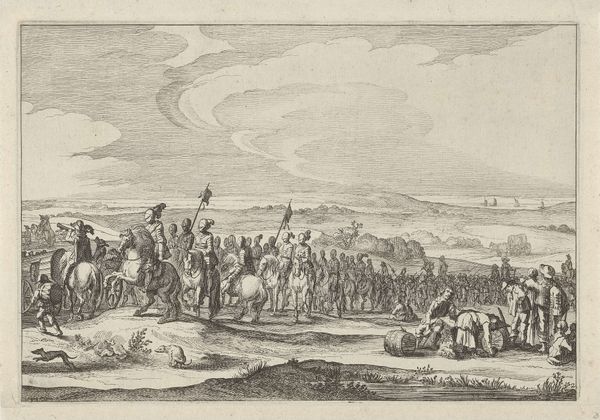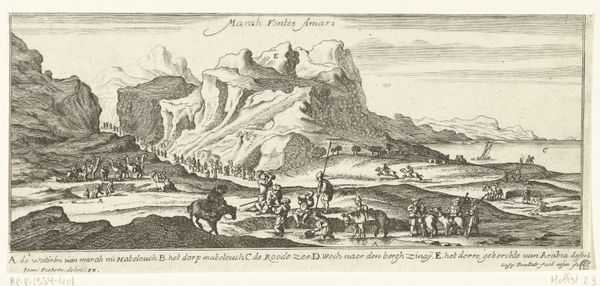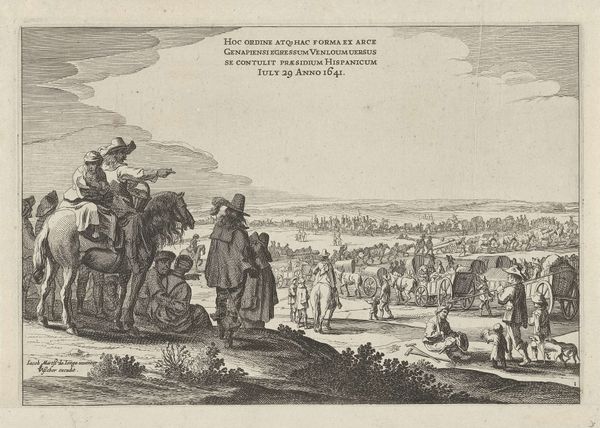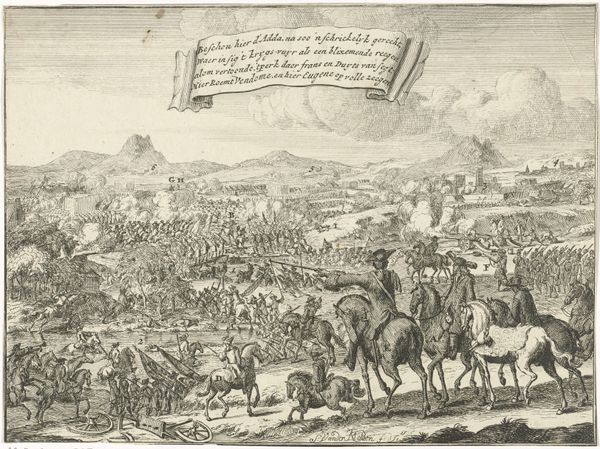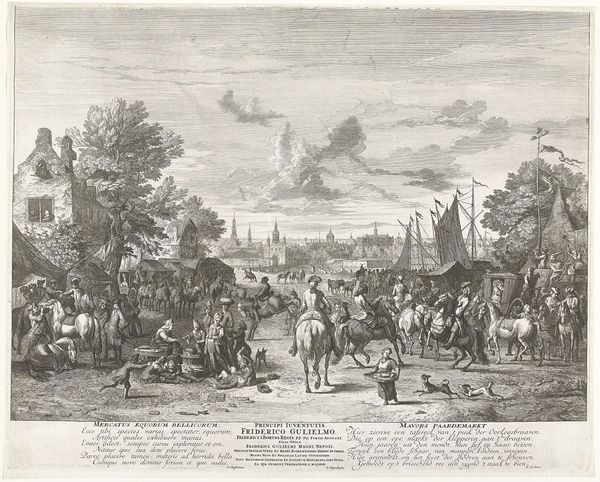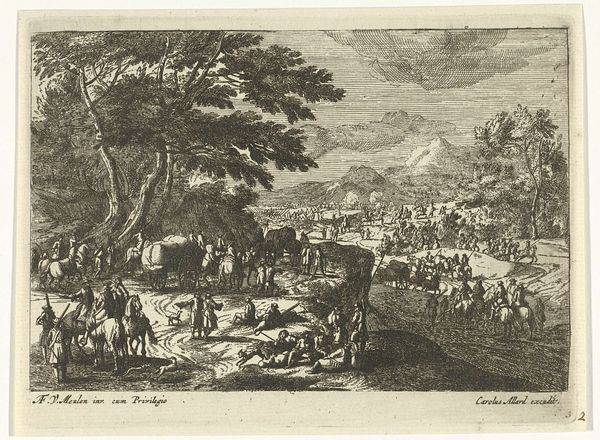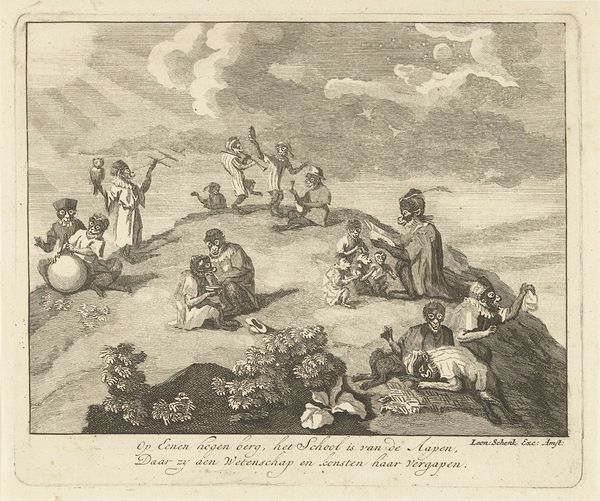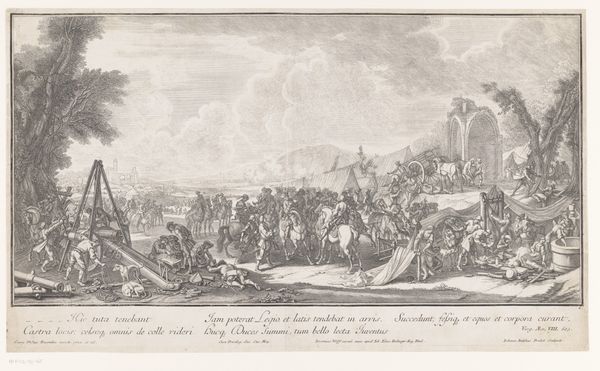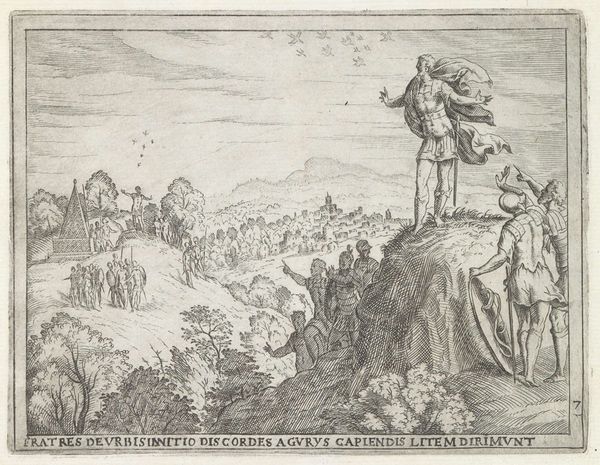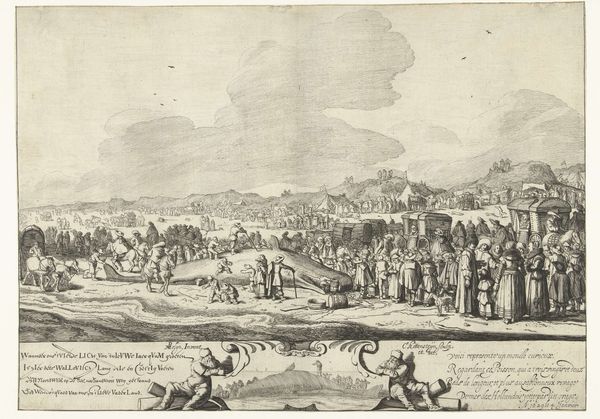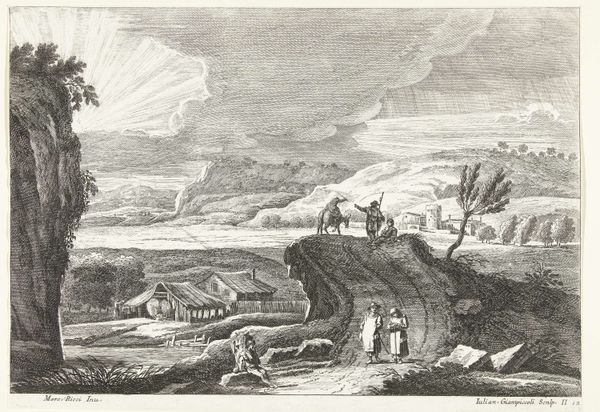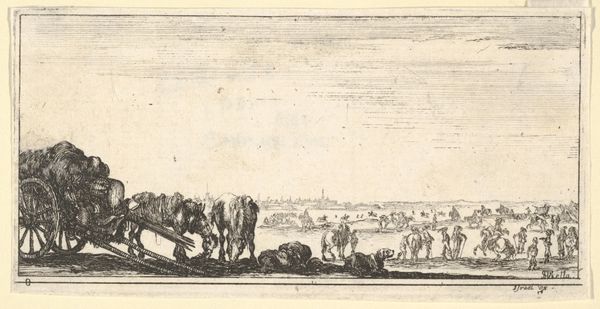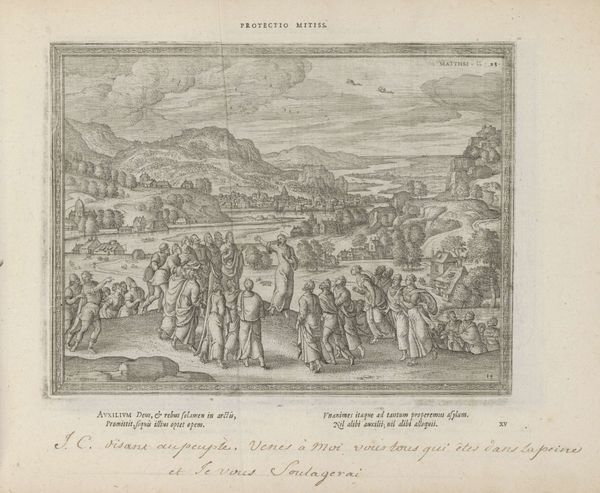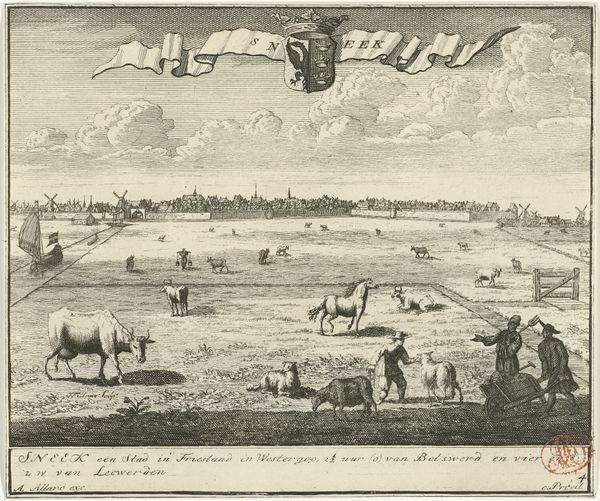
Dimensions: height 213 mm, width 337 mm
Copyright: Rijks Museum: Open Domain
Editor: So, this engraving, “Aangespoelde potvis” by Cornelis van Noorde from 1762, depicts a beached whale, surrounded by quite a crowd. I'm struck by how this event seems to be a public spectacle. How would you interpret this scene? Curator: What jumps out at me is the convergence of nature, commerce, and community. The whale, a marvel of the natural world, becomes an object of curiosity and a commodity. The inscription even states it was sold for 900 Guilders. We need to examine how this reflects the socio-economic context of 18th-century Netherlands and how it participates in natural history narratives. Editor: It’s interesting how it blends observation and capitalism. Do you think it prompts questions about exploitation and commodification, not just of the whale, but also nature itself? Curator: Absolutely. Van Noorde captured more than just a beached whale; he froze a moment rife with ecological and ethical implications. Considering the history of Dutch maritime power, the presence of the whale raises concerns about resource exploitation. Does it provoke questions about humanity’s relationship to nature and its impact? Are the townsfolk marveling at the rare specimen, or seeing the opportunity for economic gains? Editor: It makes you wonder if they considered the environmental consequences or the suffering of the animal. Thank you for shedding light on this, I will keep it in mind when looking at other works. Curator: Precisely. Remember that art acts as both a product of and commentary on its time. Examining it with intersectional considerations provides rich insight.
Comments
No comments
Be the first to comment and join the conversation on the ultimate creative platform.
